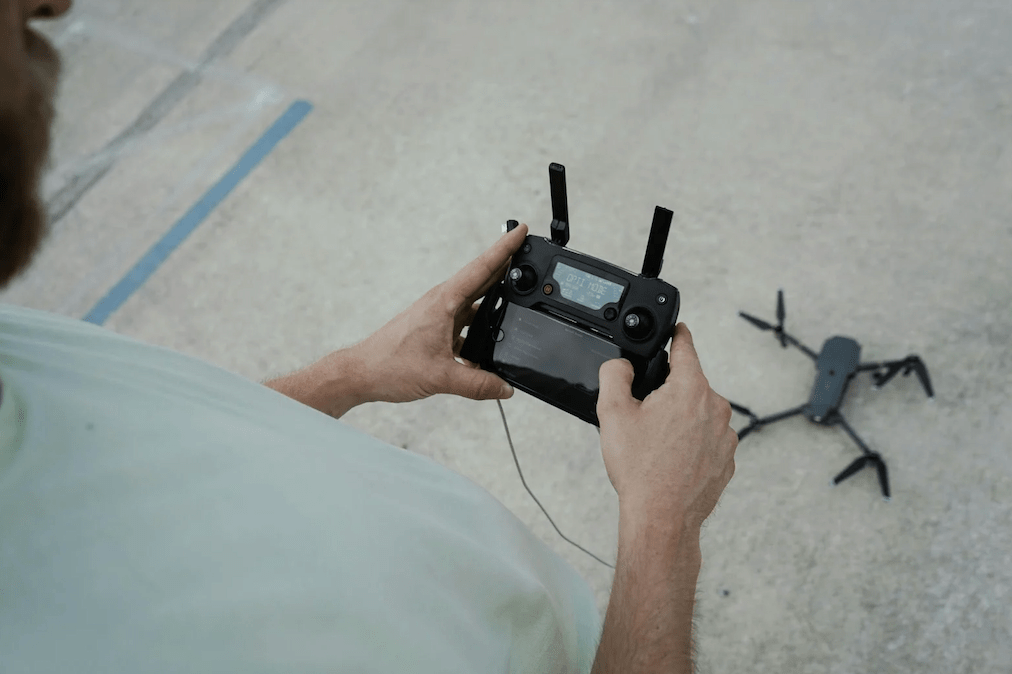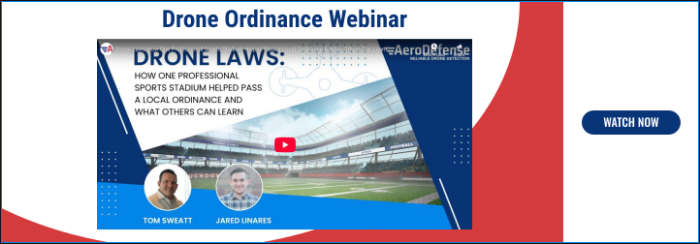Summary: Drone technology continues to advance rapidly, offering significant benefits across industries while also introducing new safety, security, and privacy challenges. Although the FAA maintains exclusive authority over U.S. airspace and has strengthened regulations through measures like Remote ID, expanded TFRs, and recent executive actions, enforcement remains difficult as drones become more accessible and widely used.
Numerous federal cases demonstrate the serious penalties for unauthorized or unsafe drone operations, highlighting the need for awareness and compliance. To protect people, property, and critical infrastructure, organizations should combine regulatory knowledge with proactive measures such as real-time drone detection systems.
The Rising Challenge of Drones
Rapid advances in drone technology have created enormous benefits for industries, emergency response, and recreation. Most drone activity in the U.S. comes from hobbyists who may be unaware of rules or best practices, and while many flights are harmless, drones still pose risks. Even well-intentioned operators can create safety concerns such as interfering with aircraft, disrupting emergency response, or causing accidents.
The FAA, Congress, and other federal agencies continue to strengthen drone regulations, though technology often evolves faster than legislation. This post highlights current U.S. federal laws governing drones and protective measures organizations and individuals can take.
Key Federal Drone Regulations
The regulation of all U.S. airspace is the exclusive domain of the Federal Aviation Administration (FAA). This federal preemption means that no state or local entity can create laws that interfere with safe aircraft operations. State and local laws CAN restrict drone take-off and landing locations and provide law enforcement action for existing laws like peeping Tom, stalking or espionage.
The United States has several federal laws and regulations that govern drones. While new rules continue to emerge, the most notable include:
- 49 U.S.C. § 40101 – Establishes that drones are “aircraft” under FAA jurisdiction.
- 49 U.S.C. § 44809 – Defines conditions for recreational drone operations.
- American Security Drone Act (ASDA) – Bars federal agencies from procuring or operating drones from untrusted manufacturers.
- FAA Part 107 Certification – Required for commercial drone operations; also provides baseline rules for all operators.
- FAA Remote ID Rule – Requires most drones to broadcast a unique identification signal. Penalties for non-compliance can reach $25,700 per violation, with potential criminal penalties up to $250,000 and three years in prison.
- FAA Temporary Flight Restrictions (TFRs) – The FAA can restrict airspace, including for drones, during major sporting events, political gatherings, or security-sensitive operations.
- New in 2025: Under 49 U.S.C. § 44812 (FAA Notice JO 7210.960), the FAA expanded its authority to issue UAS-specific TFRs. This allows airspace restrictions tailored to drone risks—such as around emergency response operations, high-profile events, or other critical situations.
- New in 2025: Under 49 U.S.C. § 44812 (FAA Notice JO 7210.960), the FAA expanded its authority to issue UAS-specific TFRs. This allows airspace restrictions tailored to drone risks—such as around emergency response operations, high-profile events, or other critical situations.
- FAA Reauthorization Act of 2024 – Expanded designated test ranges and created the Unmanned and Autonomous Flight Advisory Committee (UAFAC).
FAA Enforcement Examples
AFC Championship Drone Incident – $350,000 Fine
A man faces up to four years in federal prison and $350,000 in fines for flying a drone near M&T Bank Stadium during the NFL AFC Championship game (January 2024). The FAA had issued a temporary “no fly zone” for the area, but the operator ignored the official FAA B4UFLY app and relied solely on the DJI software.
Other Notable Enforcement Examples Include:
1. SkyPan International – $200,000 Settlement
SkyPan International, a Chicago-based aerial photography company, settled with the FAA for $200,000 after conducting 65 unauthorized drone flights in restricted airspace over New York and Chicago between 2012 and 2014. The FAA had initially proposed a $1.9 million fine, but the settlement was reached in 2017.
2. Florida Drone Pilot – $32,700 Fine
In 2021, a drone operator in Wesley Chapel, Florida, was fined $32,700 for flying an improperly registered and unlit drone dangerously close to a Pasco County Sheriff’s Office helicopter. The operator's actions forced the pilot to abandon a search for a burglary suspect to avoid a potential collision.
3. Miami Grand Prix Drone Pilot – $18,200 Fine
During the 2022 Miami Grand Prix, a drone operator was fined $18,200 for flying an unregistered drone in violation of a Temporary Flight Restriction (TFR). The operator also failed to maintain visual line of sight and operated without a Remote Pilot Certificate.
4. Pennsylvania Drone Pilot – $182,000 Fine
A drone pilot in Philadelphia faced a proposed $182,000 fine after conducting at least 26 unauthorized flights between December 2019 and August 2020. The pilot uploaded videos of these flights to YouTube, providing evidence of the violations.
Strengthening U.S. Airspace: Executive Order on Airspace Sovereignty
In 2025, President Donald J. Trump issued Executive Order 14305: Restoring American Airspace Sovereignty, reaffirming federal control over U.S. airspace and reinforcing protections against unauthorized drone activity. The Order
- Establishes a Federal Task Force tasked with coordinating an interagency response to drone threats;
- Directs the FAA to expand regulatory tools, including temporary flight restrictions and expedited rulemaking;
- Supports deployment of technology for drone detection, identification, and enforcement response; and
- Enhances interagency collaboration to respond swiftly to UAS threats while safeguarding safe and efficient airspace operations.
This EO builds upon existing FAA authorities—such as Remote ID and expanded TFR authority under 49 U.S.C. § 44812—forming a cohesive, nationwide strategy to monitor, manage, and mitigate drone-related threats to public safety and critical infrastructure.
Criminal Drone Use
Even when following regulations, drones can be misused. Examples include:
- Voyeurism & Harassment – Drones enable stalking, spying, and harassment with quiet, high-resolution cameras.
- Vandalism & Arson – Crashes can spark fires, as in the 2018 Colorado wildfire caused by a drone battery.
- Physical Assault – High-speed drones with exposed rotors can cause serious injury.
- Unauthorized Surveillance – Recording private property without consent violates privacy.
- IP Theft & Cyber Risks – Drones can capture sensitive data or deploy rogue access points to infiltrate networks.
Misuse of drones in these ways is not just unsafe — it can also constitute criminal activity investigated and prosecuted by the Department of Justice (DOJ) under applicable federal or state laws.
Protective Measures
While federal laws provide a framework, property owners, security managers, and first responders can take proactive steps:
- Critical Infrastructure Protections – Federal law prohibits drones over certain sensitive sites, but operators must post signage to enforce compliance.
- No Fly Zones & TFRs – Agencies and event organizers can work with the FAA to establish permanent or temporary no-fly zones. The new § 44812 TFR authority and the Executive Order make it easier to create UAS-specific restrictions during emergencies and high-risk events.
- Drone Detection Systems – Tools like RF-based drone detection (e.g., AirWarden®) provide real-time awareness, identifying both drones and their pilots to support rapid FAA enforcement.
- Network Security – Strengthening Wi-Fi and monitoring for rogue devices reduces the risk of cyber intrusions via drones.
Conclusion
The FAA has exclusive authority over airspace safety and efficiency.
State and Local Laws may be preempted if they conflict with FAA rules such as:
- Altitude or flight path restrictions
- City-wide privacy-related drone bans
- Equipment mandates (forcing geofencing)
Drones can legally operate in much of the airspace, so it’s important not to assume every drone is unauthorized.
Knowing the rules — and locating the pilot —enables a more informed response.
Drone Regulation FAQs
Why is drone detection important if the FAA already regulates airspace?
While the FAA establishes and enforces federal drone regulations, it cannot monitor every unauthorized flight in real time. Drone detection systems give organizations immediate situational awareness by identifying drones and their pilots the moment they enter sensitive airspace-enabling faster response, better documentation, and effective coordination with law enforcement or the FAA.
What federal laws apply to recreational and commercial drone pilots?
Recreational pilots must follow 49 U.S.C. § 44809, while commercial operators must hold Part 107 certification. Both groups must comply with Remote ID requirements, airspace rules, and operational limitations such as visual-line-of-sight, altitude limits, and avoidance of restricted zones. Violations can result in fines up to $25,700 per incident—and in some cases criminal charges.
What types of drone activity are commonly seen in criminal misuse cases?
Criminal drone activity can include contraband delivery to prisons, voyeurism, harassment, unauthorized surveillance, interference with aircraft, cyber intrusion attempts, and even physical attacks. Many cases stem from careless or uninformed operators, but malicious use—especially around jails, stadiums, airports, and critical infrastructure—is increasing nationwide.
How can organizations protect themselves from drone threats?
Organizations should combine regulatory and airspace awareness. Key steps include monitoring FAA restrictions (including TFRs) and deploying drone detection systems like RF-based sensors. These tools help organizations identify drones and pilots, document incidents, and support enforcement or safety actions.

